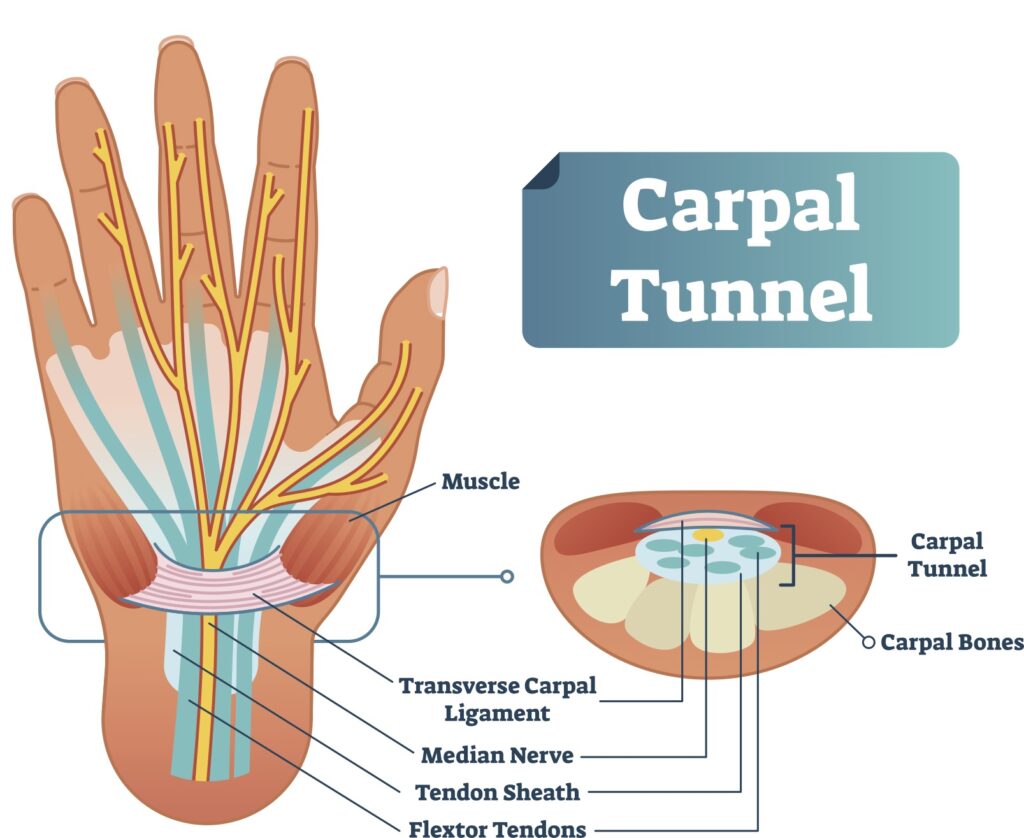When it comes to De Quervain syndrome vs carpal tunnel, the two conditions do share some symptoms. However, there are some key differences between the hand conditions. Here’s what you need to know.
What Does Carpal Tunnel Feel Like?
Carpal tunnel syndrome affects the median nerve that runs through the wrist. The compressed nerve is what causes numbness or tingling in the thumb, middle finger, index finger, hand, and wrist.
Sufferers of carpal tunnel syndrome report a tingling or numbness in the fingers or hand, except for the little finger. It could feel similar to what an electric shock would be like, and the feeling can travel up the arm past the wrist. In most cases, symptoms start out mild and then increase. Carpal tunnel syndrome often wakes people up at night.

What Does De Quervain’s Syndrome Feel Like?
De Quervain’s syndrome is a condition of the tendons. The primary symptom of De Quervain’s tenosynovitis is pain around the base of the thumb. Many people with it find it hard to move the thumb and wrist about and may have swelling around the base of the thumb.
What is the Difference Between De Quervain Syndrome vs Carpal Tunnel?
A huge difference between De Quervain syndrome vs carpal tunnel syndrome is the location of the pain. While the pain generally occurs in the same area. If you delve into the specific area, there is a difference. Symptoms are similar, but the location and severity of pain can vary depending on the condition. Because the symptoms for both conditions tend to get worse when doing repetitive activities, there is some overlap.
With carpal tunnel syndrome, the pain and numbness are typical at night. Numbness and tingling are a symptom of carpal tunnel syndrome. You could feel this in your fingers and hand. Carpal tunnel syndrome doesn’t affect the tendons, it’s a condition that puts pressure on a nerve in the wrist, and that’s what causes the symptoms.
De Quervain syndrome only affects the thumb tendon, not the nerve. It’s a condition that affects the tendons on the thumb side of the wrist. That’s why a lot of the symptoms are around the base of the thumb.
Both conditions can be painful and share some symptoms. But the precise cause behind the pain is very different.
Hand Surgery at The Harley Clinic
The two conditions typically respond well to non-surgical methods, but in some cases, surgery may be required. Non-surgical options include splinting, manual stretching, and strengthening programs.
If conservative treatments don’t work, your doctor may recommend surgery. This would be either carpal tunnel release surgery or De Quervain syndrome surgery, depending on your individual case.
If you’re considering hand surgery, book a consultation today at the Harley Clinic to talk through your treatment options. We offer a range of hand and upper limb treatments, including trigger finger release surgery and Dupuytren’s contracture surgery.
Are you interested in reading more about the top surgical and non-surgical cosmetic procedures? We’ve pulled together the ultimate guide on plastic surgery statistics.













